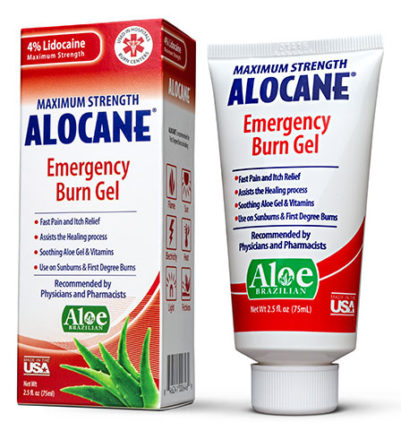Smart treatments for workplace burns
Should I use ice to treat a burn?

Responding is Mark McGreevy, vice president of marketing, Alocane, distributed by Quest Products Inc., Pleasant Prairie, WI.
Experiencing a burn on the job not only can ruin your day, it can make it harder for you to continue to work. What you do right after receiving a burn will directly impact both your ability to get back to work and your comfort while the burn heals. It’s important to adopt a smart course of treatment to ensure a speedy recovery so you can be your most productive self at work. Applying ice to a burn can shock and further damage your already injured skin, and can even result in frostbite.
Also, it’s important to note that many “home remedies” used to treat burns, such as butter, mayonnaise or honey, can actually make your burn worse.
Aloe (aloe vera) has been used to treat burns for centuries. It naturally reduces inflammation and promotes the healing process, while keeping the skin cool and moist. It is an excellent first step for treating most common burns. However, when you’re in pain, soothing may not be enough.
For burn pain, lidocaine can provide instant relief. You may be familiar with other topical solutions that contain lidocaine; however, they’re rarely found with enough of the active ingredient to make a real difference and they don’t contain aloe.
Vitamin E assists in the healing process by providing increased circulation, breaking down blood clots and helping to prevent more from forming, and promoting healing with the formation of less scar tissue.
Plenty of individual products are formulated to relieve pain or promote healing. Chances are your first aid kit at work doesn’t contain any products with aloe, lidocaine or vitamin E. Stop by your local pharmacy and ask them for a product that contains 4 percent lidocaine, aloe vera and vitamin E, so you’ll be prepared for the next burn.
Editor's note: This article represents the independent views of the author and should not be construed as a National Safety Council endorsement.
Post a comment to this article
Safety+Health welcomes comments that promote respectful dialogue. Please stay on topic. Comments that contain personal attacks, profanity or abusive language – or those aggressively promoting products or services – will be removed. We reserve the right to determine which comments violate our comment policy. (Anonymous comments are welcome; merely skip the “name” field in the comment box. An email address is required but will not be included with your comment.)

